 W
WThe Virtual Boy is a 32-bit tabletop video game console developed and designed by Nintendo, first released in Japan on July 21, 1995 and later in North America on August 14 of the same year. The following lists contains all of the games released for the Virtual Boy.
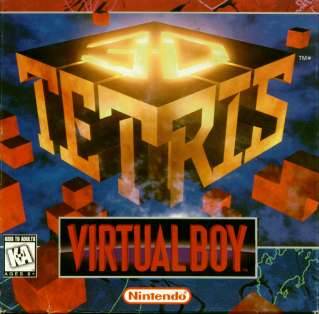 W
W3D Tetris is a 1996 puzzle video game developed by T&E Soft and published by Nintendo. It was released for the Virtual Boy on March 22, 1996, in North America. Players control multiple falling blocks, rotating and positioning them to clear layers in a three-dimensional environment similar to Tetris's gameplay. The game contains multiple modes and variations thereof, as well as different difficulty settings and levels. Parts of 3D Tetris are rendered as 3D wire-frame models. A version of the game entitled Polygo Block was to be released in February 1996 in Japanese markets, but never emerged. The game received mostly negative reviews with critics panning it for a lack of originality.
 W
WBomberman: Panic Bomber is a 1994 puzzle video game developed and published by Hudson Soft for the PC Engine on December 22, 1994. It was later released for the Neo Geo, Super Famicom, Sharp X68000, FM Towns, NEC PC-9821, Virtual Boy, and PlayStation Portable. It saw a re-release for the Wii and Wii U's Virtual Console services. Panic Bomber is a falling block game with the players' goal being to clear matching blocks using bombs, ensuring that their screen does not fill and that their opponents' screens do. It received mixed to positive reception, identified as a decent game by multiple critics. It has been compared to the falling block puzzle game Tetris. The Virtual Boy version was received mixed reception for its handling of the platform's visual capabilities.
 W
WGalactic Pinball is a pinball video game for Nintendo's Virtual Boy game console. The game was released on July 21, 1995 in Japan and on August 14, 1995 in the United States. It is set in the Milky Way galaxy, and has players maneuvering a puck around one of four pinball tables available in the game. The Virtual Boy's standard red-and-black color scheme resulted in criticism of this and other games on the platform for causing nausea, headaches, and eye strain. It also uses parallax, which allows the game to display three-dimensional effects. It has received a mixed reception; it was praised for its authenticity, while reception to its physics and controls were mixed. It has also received criticism for its lack of ambition and originality.
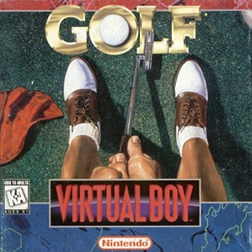 W
WGolf is a video game that was released within months of the Virtual Boy console's launch. It was developed and published by T&E Soft in Japan and published by Nintendo in North America. Golf uses standard golf rules and is set in the fictional 18-hole Papillion Golf & Country Club. Hazards include water, sand traps, trees, and deep rough grass. It is displayed in the Virtual Boy's standard red and black color scheme with 3D effects by use of a 3D processor. It was met with critical praise for its controls and physics and mixed reviews for its graphics. Nintendo Power called it the third best Virtual Boy release of its year.
 W
WInnsmouth no Yakata, also rendered as Insmouse no Yakata, is a 1995 first-person horror video game developed by Be Top and published by I'Max in Japan for the Virtual Boy. Assuming the role of a private detective in 1922, the player is tasked with escaping a monster-infested mansion with an artifact called the Necronomicon. The player navigates several mazelike levels that must be finished under a certain amount of time. It is loosely based on the H.P. Lovecraft novel The Shadow over Innsmouth, though the only similarity between the two is the presence of fish-like monsters. It received mixed reviews, with critics praising its Lovecraftian setting. Reception of the gameplay was mixed, with critical contemporary reviews from magazines Famitsu and VB Guide, though it was viewed positively for its ambition and uniqueness.
 W
WJack Bros. is an action video game developed and published by Atlus for the Virtual Boy, released in late 1995 in Japan and North America. It is a spin-off from Atlus' video game series Megami Tensei, and was the first entry to be released outside Japan.
 W
WMario Clash is a video game produced by Nintendo in 1995 for the Virtual Boy. It is the first stereoscopic 3D Mario game, and a 3D reimagining of Mario Bros. Reception for the game was mixed.
 W
WMario's Tennis, known in development as Mario's Dream Tennis, is a 1995 sports game developed by Nintendo for the Virtual Boy video game console. The game was released at the launch of the Virtual Boy, and even as a pack-in game in North America.
 W
WNester's Funky Bowling is a bowling video game developed by Saffire and published by Nintendo for the Virtual Boy console. It was only released in North America on February 26, 1996, and was the second-to-last game released for the system before it was discontinued. Players control Nester, a character from the Nintendo Power comics, or his twin sister Hester, as they compete to see who is the superior bowler. It features standard bowling mechanics and rules, and has three modes of play - Bowling, Challenge, and Practice, all three supporting one or two players.
 W
WRed Alarm is a 1995 shoot 'em up video game developed by T&E Soft and published by Nintendo. Released as a Virtual Boy launch game, it requires the player to pilot a space fighter and defeat the army of a malevolent artificial intelligence called "KAOS". The game takes inspiration from the 1993 title Star Fox, and it is one of the few third-party titles for the Virtual Boy. Unlike most of the console's games, Red Alarm features three-dimensional (3D) polygonal graphics. However, hardware constraints limited the visuals to bare wire-frame models, similar to those of the 1980 arcade game Battlezone. Reviewers characterized Red Alarm's graphics as confusing, but certain publications praised it as one of the most enjoyable Virtual Boy titles.
 W
WSD Gundam Dimension War is a 1995 tactical role-playing video game published for the Virtual Boy in Japan by Bandai. Being the system's only licensed game in Japan, it is part of the SD Gundam series, a spin-off of the larger Gundam franchise by Sotsu and Sunrise. Players control a fleet of robots and vehicles as they set out to rid the galaxy of enemies, with gameplay involving moving robots towards opponents and engaging in combat sequences.
 W
WSpace Invaders is a 1978 shoot 'em up arcade game developed by Tomohiro Nishikado. It was manufactured and sold by Taito in Japan, and licensed by the Midway division of Bally for overseas distribution. Space Invaders was the first fixed shooter and set the template for the shoot 'em up genre. The goal is to defeat wave after wave of descending aliens with a horizontally moving laser to earn as many points as possible.
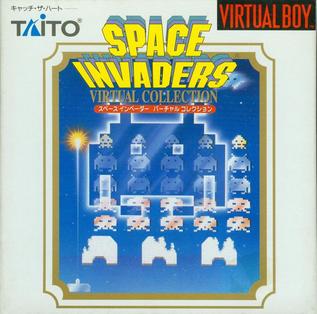 W
WSpace Invaders Virtual Collection is a 1995 compilation video game developed and published by Taito in Japan for the Virtual Boy. It includes direct ports of the arcade game Space Invaders (1978) and its direct sequel Space Invaders Part II (1979), alongside 3D remakes that take advantage of the Virtual Boy's hardware capabilities. Both games also feature a number of alternative gameplay modes, such as score attack and time attack modes.
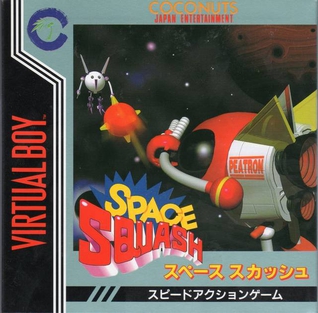 W
WSpace Squash is a 1995 sports video game developed by Tomcat System and published by Coconuts Japan Entertainment in Japan for the Virtual Boy. In the game, the player assume the role of a robot called Peatron to defeat a group of space pirates that have taken over the planet Animal Star on a intergalactic squash tournament. Its gameplay involves Peatron ricocheting a ball across a three-dimensional court and defeating the opponent on the other side in order to proceed further in the tournament.
Teleroboxer is a game for Nintendo's Virtual Boy video game console. The game is a boxing simulator played in the first-person point of view.
 W
WV-Tetris is a 1995 puzzle video game developed by Locomotive and published by Bullet-Proof Software in Japan for the Virtual Boy. Its gameplay involves the player clearing horizontal lines by moving pieces of different shapes that descend onto the playing field by filling empty spaces in order to make completed lines disappear and gain points across three modes of play.
 W
WVertical Force is a 1995 vertically scrolling shooter video game developed and published for the Virtual Boy by Hudson Soft for Japan and Nintendo for North America. The player controls a starship, the Ragnarok, that must destroy a malfunctioning supercomputer on a human colony planet before it wipes out all of mankind. Gameplay is similar to Hudson's own Star Soldier series, featuring power-up items that increase the player's abilities and parallax scrolling. The player can also move their ship farther into the background to avoid enemies and obstacles in the way.
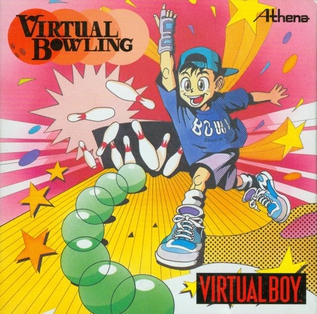 W
WVirtual Bowling is a 1995 sports video game developed and published by Athena in Japan for the Virtual Boy. In the game, the player participates in a series of bowling tournamnets consisting of four 10-frame game matches at various alleys against computer-controlled opponents, in order to obtain a high score and progress further. Its gameplay, featuring three modes of play, is viewed from a first-person perspective.
 W
WVirtual Boy Wario Land is a platforming video game developed and published by Nintendo for the Virtual Boy game system in 1995. It stars Wario, a treasure hunter who must find treasure and fight enemies to progress. Wario can jump and charge with his shoulder as basic techniques, though he can also equip special hats to gain things such as fire breathing and bull horns. He has the ability to enter the background at certain points, making use of the console's stereoscopic 3D effect. It was developed by Nintendo R&D1, containing a large portion of its staff, and features the red-and-black color scheme that is standard for Virtual Boy releases.
 W
WVirtual Fishing is a 1995 fishing video game developed by Locomotive Corporation and published by Pack-In-Video in Japan for the Virtual Boy. In the game, the player participates in a series of fishing tournaments at various different locations by catching a large number of fishes with a high average weight under a time limit. Its gameplay consists of two segments and features two additional modes of play.
 W
WVirtual Lab is a 1995 puzzle video game developed by Nacoty and published by J-Wing in Japan for the Virtual Boy. Its gameplay is reminiscent of Pipe Dream and the Game Boy title Chiki Chiki Tengoku, and involves the player moving worm pieces of different shapes that descend onto the playing field by linking or shutting their open orifices together to make them disappear and gain points across multiple levels.
 W
WVirtual League Baseball is a 1995 baseball video game developed and published by Kemco for the Virtual Boy. A sequel, Virtual League Baseball 2, was planned, but later canceled due to the Virtual Boy console's poor sales.
 W
WWaterworld is a video game released for the Super Nintendo Entertainment System, Virtual Boy, MS-DOS, Microsoft Windows and Game Boy, based on the film of the same name, along with unpublished versions for the Mega Drive/Genesis, Sega Saturn, Atari Jaguar, 3DO and PlayStation. These games were produced by Ocean Software. The SNES and Game Boy games were released only in Europe in 1995 and the Virtual Boy game was released exclusively in North America in November 1995. It was released for PC in 1997. The game received widespread negative reviews and the version released for the Virtual Boy is generally considered to be the worst game of its 22 releases.